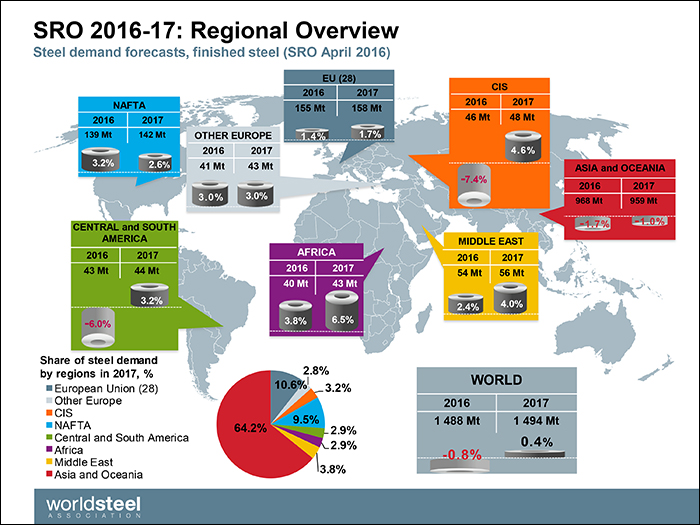Moreover, India’s prospects are brightening due to low oil prices, the reform momentum and policies to increase infrastructure and manufacturing output. India’s steel demand will increase by 5.4% in both 2016 and 2017 reaching 88.3 Mt in 2017.
In Turkey, steel demand is expected to grow by 3.3% in 2016 and 3.2% in 2017, supported by the government’s focus on pro-growth economic policies and low oil prices.
And further on it says, steel demand in the ASEAN 5 (Thailand, Malaysia, Vietnam, Indonesia, Philippines) is also expected to maintain a growth rate of around 6% despite their exposure to China due to their infrastructure building activities and will reach 74.6 Mt in 2017.
It also states, steel demand in the emerging and developing economies excluding China is forecast to grow by 1.8% and 4.8% in 2016 and 2017 respectively. Steel demand in these economies will amount to 457.1 Mt in 2017, accounting for about 30% of world steel demand.
Developed economies’ recovery momentum maintained despite headwinds
Furthermore, while developed economies are also feeling the effect of the worsening global economic environment, they are expected to maintain a stable recovery momentum. Steel demand in the developed economies will grow by 1.7% in 2016 and 1.1% in 2017.
According to worldsteel, in the EU, a mild recovery in steel demand continues with generally improving economic sentiments and investment conditions. However, uncertainties in the political landscape related to the refugee crisis and Brexit raises risks to the improving economic condition. The release also concludes, steel demand in the EU is forecast to grow by 1.4% in 2016 and a further 1.7% in 2017.
Furthermore it is said, in the US, steel demand is dampened by the fall in oil prices and a strong dollar, but an improving job market and a robust housing sector will support steel demand. Steel demand in the US is expected to grow by 3.2% in 2016 and 2.7% in 2017.











